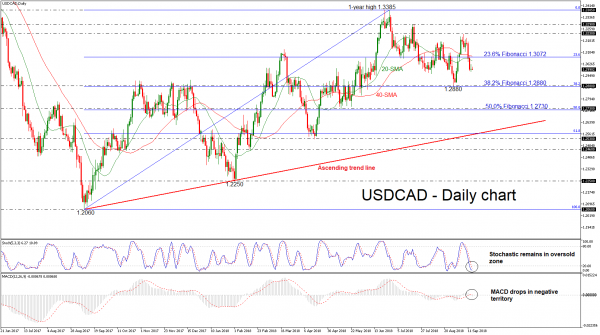USDCAD has reversed to the downside this week, recording sharp losses following the bounce off the 1.3230 resistance level. Moreover, the pair plunged below the 23.6% Fibonacci retracement level of the upleg from 1.2060 to 1.3385 of 1.3072, and the 20- and 40-simple moving averages (SMAs) in the daily timeframe. However, since yesterday, the pair remains flat.
Momentum indicators are currently supporting that negative momentum is likely to strengthen in the short-term. Specifically, the stochastic oscillator is still holding in the oversold zone, while the MACD oscillator dropped below the trigger and zero lines, signaling selling pressures.
Should the market extend losses, support could be met at the 38.2% Fibonacci mark, which overlaps with the 1.2880 support level. A significant leg below this area could send prices towards the 1.2730 region, which stands around the 50.0% Fibonacci.
On the other side, if the price bounces up, immediate resistance could be met at the 23.6% Fibonacci of 1.3072 and near the moving averages, which act as strong obstacles for the bulls. Steeper increases, though, could drive the price south towards the 1.3230 barrier, where it topped on September 6.
In the bigger picture, over the last three months, USDCAD has been moving lower, creating lower lows and lower highs, posting a bearish correction. However, in the long-term timeframe the pair is bullish as long as it holds above the ascending trend line, which has been holding over the last year. A touch of the diagonal line is possible in the next weekly sessions.















